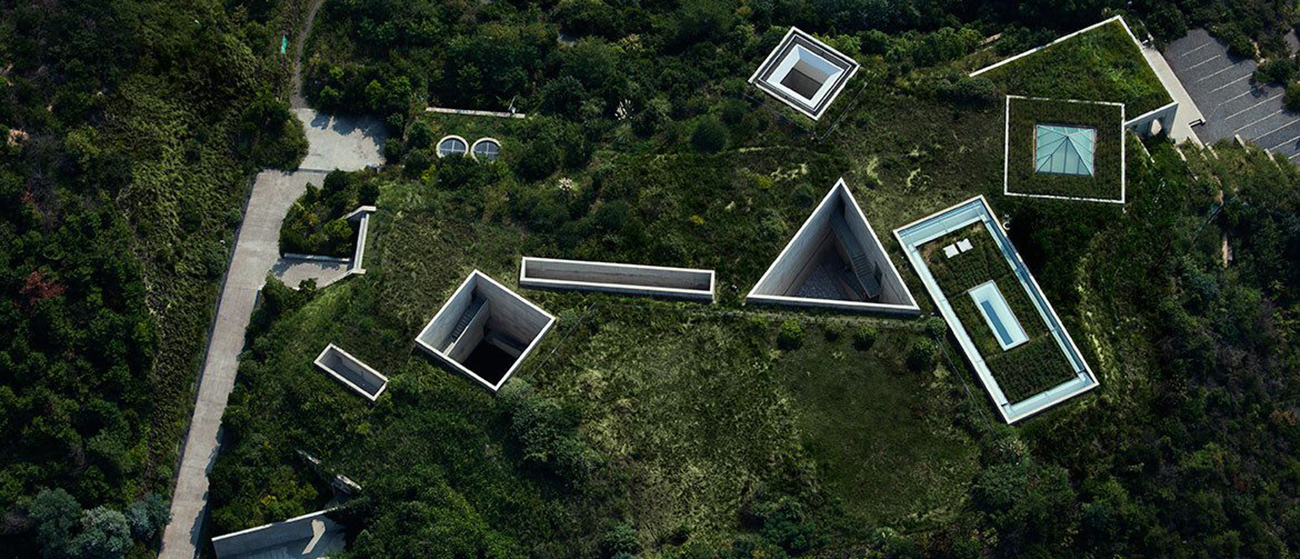
Welcome to Kosmorganica
Values and beliefs
It is a constant idea of mine that behind the cotton wool (of daily reality) is hidden a pattern, that we- I mean all human beings- are conneted with this; that the whole world is a work of art; that we are all parts of the work of art.
– Virginia Woolf ‘A Sketch of the Pas’
Harmonic
Balance and harmony are prominently featured in Kosmorganica. Local enchantment with the natural order and mathematical proportions is visible in their architecture and installations. Performers and visual artists include ratios according to the golden mean in their compositions and symbolism. [ Figure 1 ]Locals, Lita Albuquerque, Rashed Latashia, Max Bill, and Dorothea Rockburne, consciously replicated natural forms and proportions. Forefathers, Brice Marden, early Piet Mondrian, Mark Tobey, and James Whitney, allowed their bodies and energy to intuitively create shapes and lines that mirror the natural formation of plant growth, star clusters, river paths, and planetary orbits. [ Figure 2 ] Like the ancient Greeks, Kosmorganian architects apply harmonic proportions in the built environment to evoke social harmony. Pioneer, Buckminster Fuller had an entire vision of the future and the architecture design to reflect it. Fuller predicted that the focus of scientific invention on weaponry and capitalism would transform and redirect itself in collaboration with design and art to achieve omnihumanity.[1] See Ecosophic practices
Religion
As the world becomes more and more secular, spiritual expression, imitation of religious rituals, and altar-like installations become more apparent in the arts. [ Figure 3] Visitors often say Kosmorganica experiences elicit spiritual or contemplative responses. Kosmorganica’s religiosity is not framed by dogma, a specific institution nor a common ritual. Rather it aligns closely with the definition of historian Mary Evelyn Tucker: ‘religion is an orientation to the cosmos and our role in it…a means whereby humans, recognizing the limitations of phenomenal reality, undertake specific practices to effect self-transformation and community cohesion within a cosmological context. Religion thus refers to those cosmological stories, symbols systems, ritual practices, ethical norms, historical processes, and institutional structures that transmit a view of the human as embedded in a world of meaning and responsibility, transformation, and celebration. Religion connects humans with a divine or numinous presence, with the human community, and with the broader earth community. It links humans to the larger matrix of mystery in which life arises, unfolds, and flourishes.’[2]
Tucker’s definition of religion is not as restrictive as modern definitions loaded with personal and cultural baggage. It includes other domains such as cosmology, mythology, philosophy, sociology, semiotics, and consciousness studies.
The label ‘religious’ is a trigger word for many Western ears. For many listeners, it elicits a knee-jerk reaction and conjures doctrine and the institutions that have prosecuted and divided people more than uniting them. For this reason, the Bureau of Communications voted to use ‘spirituality’ or ‘metaphysical’ to respect locals and attract visitors who are weary of religiosity.
Sensorial
Sensorial intelligence such as musical, spatial, naturalist, and bodily-kinesthetic are sought after by many travelers to Kosmorganica who are stuck in their heads. Kosmorganica has witnessed double the number of visitors in the past two decades. They think this increase is due to the plentitude of phenomenological situations to feel, smell, touch, see and hear so that people can feel grounded and connected with their environment. Through sensorial immersion in the built environment, visitors nurture what they call a tabula rasa mindset, a heightened state of awareness. Explore the tabula rasa mindset.
Cosmos
Many locals reflect their pantheistic vision in references to cosmology and their attraction to our relationship with the stars, planets, and sun. Like ancient Egyptians and Greeks, Kosmorganians believe even rocks have consciousness or energy. Boulders arranged in specific patterns resonate and aid in unifying all living matter with their surroundings near and far. Hence, their compositions are not just decorative, but also produce healthier environments in which to live. Some celebrate this vision in a medium called land art or earthworks. Earth arrangements were a formalized religious art in 9th century Japan. Buddhist monk, Kūkai introduced sacred diagrams or mandalas into Zen Buddhist gardening.[3] Composing in nature is also reminiscent of megalithic structures that served as worshipping grounds. When visiting earthworks, visitors say they feel a powerful cosmic spiritual energy.
Good Vibrations
Another striking feature of Kosmorganica is the abundance of drone music, minimal music, and sound art. Some Kosmorganians believe sound frequencies can heal the body and mind. A visit would not be complete without participating in a sound walk or going to see and hear some sound art. Locals believe that your body synchronizes to sound frequencies which ultimately brings unity and harmony to society. The hearing impaired is not excluded since many sounds are felt through the body and not just heard through the ears. Learn more about frequency bathing.
[1] Fuller, R. B., & Kuromiya, K. (1981). Critical path. New York: St. Martin’s Press. 254.
[2] Spretnak, C. (2016). Spiritual dynamic in modern art: Art history reconsidered, 1800 to the present.14.
[3] Japanese philosopher, KuKai was the founder of the Shingon Esoteric School. They influenced Buddhism into the Japanese garden by introducing mandalas. Kukai believed that rocks speak, but it takes practice for humans to hear them. Japanese philosopher, Dogen argued against bio-centrism and taught that Buddha-nature is not only in sentient beings, but also in fences, walls, and pebbles. Berthier, F., & Parkes, G. (2005). Reading Zen in the Rocks: The Japanese dry landscape garden. Chicago, Ill: University of Chicago Press. p. 139-140.
